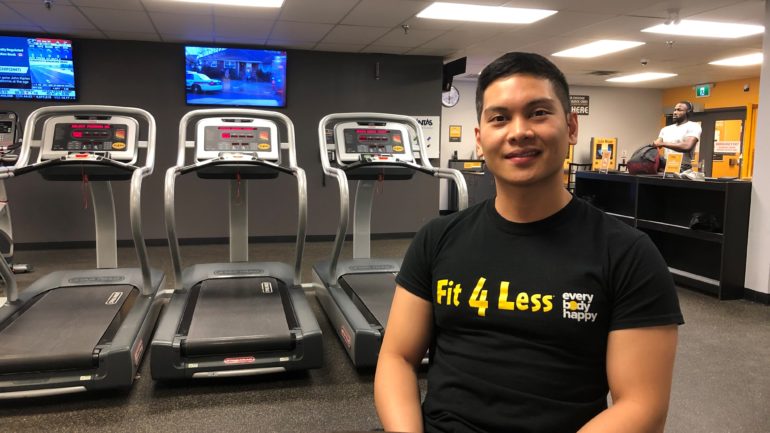
Rachael Dyal
A workout routine inspired by a popular anime character teaches a few gym rats the importance of good workout habits and balance.
It’s the new year, and it’s almost a guarantee at least a few people have made it their new year’s resolution to go to the gym more.
Some people have expressed wanting to workout like the character Saitama from the anime series, One Punch Man, to get into shape.
Saitama proves his extreme strength by defeating his enemies in one punch, getting this power by doing 100 sit-ups, 100 squats, 100 push-ups, and a 10 kilometre run every day.
“I think the greatest benefit of this workout would be it sets a good habit of movement every day,” said Victor Miranda, a fitness trainer at R3 Fitness Studio in Scarborough.
Miranda has never tried the workout himself, but has extensive knowledge when it comes to fitness and health.
Miranda partners with R3 Fitness Studio, where he also trains, and is the co-owner of The Wellness Camp, a business that primarily promotes physical activity.
Miranda said he believes the real purpose of the One Punch Man workout is to get people into the habit of moving daily.
The 100 reps are doable but what’s most important is getting the rest needed to let the muscles heal, especially to those who just started, Miranda said.
“The 10 kilometre run can be done, but again, recovery is very important,” he said.
For Julian Ilagan, a 29-year-old kinesiology graduate who works part-time at Fit4Less in Scarborough, he was inspired to try the workout himself.

Ilagan first tried the workout when he went on vacation to the Philippines.
“I was more motivated to do it because I was on vacation in the Philippines, and they don’t have all the luxurious gyms that we have in the area that my parents are from,” Ilagan said.
He found he was pretty successful, but admits there was a certain pain threshold he had to overcome.
One of the biggest challenges Ilagan faced was feeling a bit unmotivated to do the workout.
This discouragement would usually come from a lack of sleep, he said.
Ilagan would then have to break the workout down throughout different parts of the day, which was time consuming.
He said he paced himself while doing the workouts by only doing a certain number of reps at the beginning, working his way up to 100.
This allowed Ilagan to give his body the rest it needed so he wouldn’t overexert his muscles.
“The workout, however, doesn’t mean doing 100 reps without resting. Our bodies have certain limits,” Ilagan said.
He also found he was adding exercises to the workout to make it more balanced.
Ilagan acknowledged the workout was a bit easier for him because he had a prior history of running and exercising.
“For someone who just started or they don’t have an extensive history in exercise, they might find it difficult because of how sore you get,” he said.
Ilagan stopped the One Punch Man workout after six months when he returned to Canada from the Philippines, because he was dealing with work and other mental stresses that prohibited him from continuing the workout despite his results.
If Ilagan had to choose between the gym or the One Punch Man workout without considering people’s living conditions, he advises people to go to the gym.
“I’d say go the safe route, three times a week, full-body workout at the gym. It’s safer and you have more time to rest,” he said. “There’s less chance for discouragement; the fallout rate for quitting would be less.”
One thing Miranda and Ilagan agree on is the intensity the workout has on one’s muscles and that muscles need time to rest and heal. That the key to maintaining and completing any workout.

